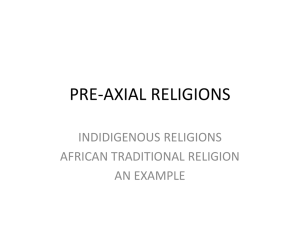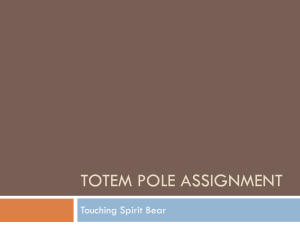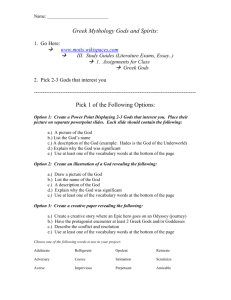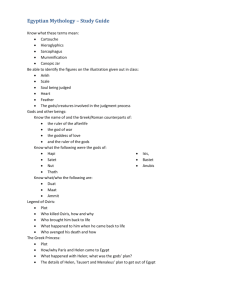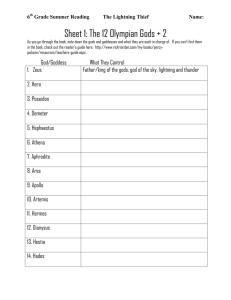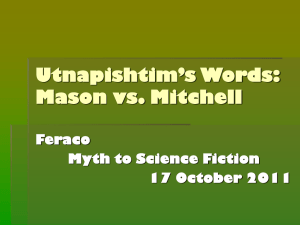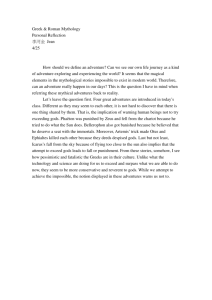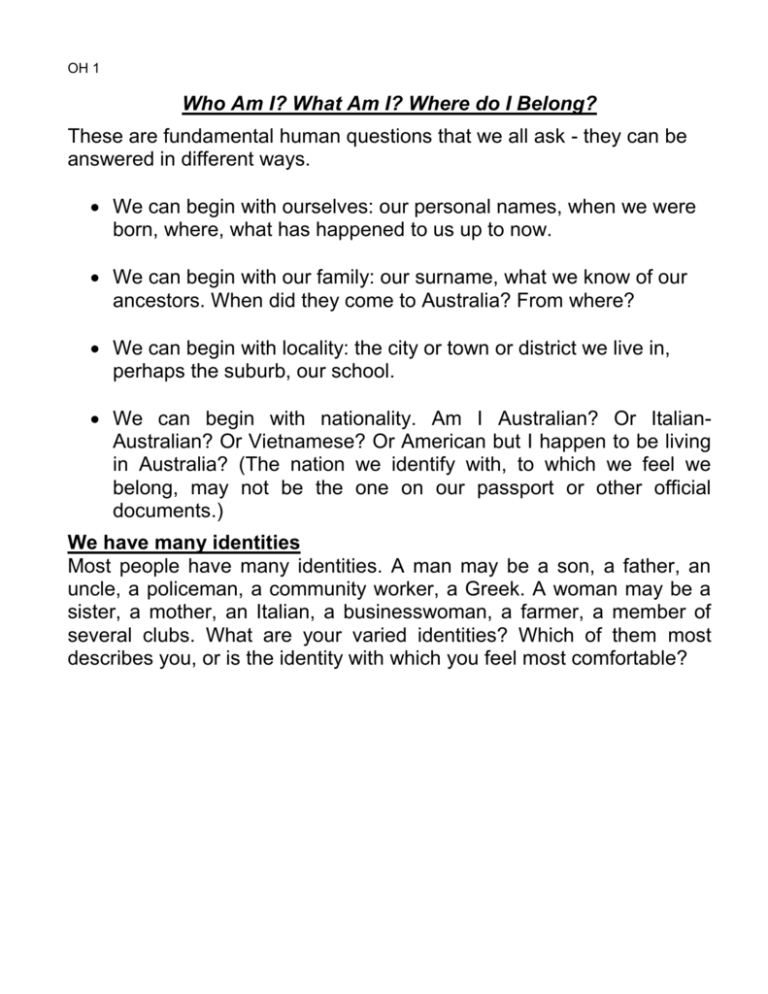
OH 1
Who Am I? What Am I? Where do I Belong?
These are fundamental human questions that we all ask - they can be
answered in different ways.
We can begin with ourselves: our personal names, when we were
born, where, what has happened to us up to now.
We can begin with our family: our surname, what we know of our
ancestors. When did they come to Australia? From where?
We can begin with locality: the city or town or district we live in,
perhaps the suburb, our school.
We can begin with nationality. Am I Australian? Or ItalianAustralian? Or Vietnamese? Or American but I happen to be living
in Australia? (The nation we identify with, to which we feel we
belong, may not be the one on our passport or other official
documents.)
We have many identities
Most people have many identities. A man may be a son, a father, an
uncle, a policeman, a community worker, a Greek. A woman may be a
sister, a mother, an Italian, a businesswoman, a farmer, a member of
several clubs. What are your varied identities? Which of them most
describes you, or is the identity with which you feel most comfortable?
OH2
Some Definitions of Religion.
Here are some definitions of religion which others have come up with:
a) religion n. belief in the existence of a superhuman controlling
power, usually expressed in worship.
b) religious a. believing in a religion and carrying out its practices; of a
monastic order; very conscientious. (The Australian Oxford
Dictionary)
c) ‘religion’ derives one of its meanings from the root words ‘re’ and
‘ligare’ meaning ‘to bind or tie back to oneself again’. Thus religion
is that process whereby meaning is gained by re-encountering or
returning to our own selves, condition, way of life, symbols etc.
(Adapted and enlarged from Collins English Dictionary)
d) Religion is a response to the mystery of life and is natural to human
beings. (Ronald J. Wilkins, Religions of the World)
e) Religion is the quest for the values of the ideal life, involving three
phases: the ideal, the practices for attaining the values of the ideal,
and the theology or worldview relating the quest to the environing
universe. (The Macquarie Dictionary)
f) Religion is the response of human beings to the human condition.
Faced with the difficulties of living in the world, we develop an
understanding of our universe and our existence, so that life takes
on purpose and significance. (Myrtle Langley, A Book of Belief)
Hayward, P. (1995). The Nature and Origins of Religion. Anembo Books: Concord. pp.16-17
READ PAGE 21&22 + Prior learning
Describe in three lines or less what you understand as a “religious
worldview”.
OH3
Here are some explanations, rather than definitions of religion.
Some of these are taken from Religion in Ancient History by
S.G.F. Brandon.
Try to find a word or two which summarises or describes each
explanation:
Xenophanes, Greek philosopher, 6th century BC:
Mortals think that the gods are begotten, wear clothes like their
own, and have a voice and a form. If oxen or horses or lions had
hands and could draw with them and make works of art as men
do, horses would draw the shapes of gods like horses, oxen like
oxen: each kind would represent their bodies just like their own
formé.
Ancient Mesopotamian, 2nd—let century BC:
The human race had been specifically created to build temples
for the gods and to feed them with offerings: religion was
essentially divine service and constituted reason for the
existence of mankind.
Euhemeris of Messine, 300 DC:
The deities of many peoples were in origin ancient heroes,
whose deeds caused them to be venerated, and ultimately
considered divine.
Lucretius, 1st century BC:
I do not deny the existence of gods, but they have no contact
whatever with this world and its inhabitants. Humans
observe the seasons and the heavens, but do not
understand them, so they ascribe all activity as being at the
nod of the gods.
OH3
Augustine of Hippo, theologian, 4th century:
You [God] have created us for yourself, and our heart
restless until it comes to rest in you.
Julian of Norwich, English woman mystic, 14th century:
Everything owes its existence to the love of God.
Carl Jung, psychotherapist, 20th century:
[Religious conversion] gives a human being that sense of
wholeness which he had as a child, but loses when he
leaves his parents.
Dag Hammarskj oeld, former UN Secretary-General, 20th
century:
I don’t know who — or what — put the question; I don’t know
when it was put. I don’t even remember answering. But at
some moment I did answer Yes to Someone — or
Something — and from that hour I was certain that existence
is meaningful and that, therefore, my life in self-surrender
had a goal.
Hayward, P. (1995). The Nature and Origins of Religion. Anembo Books: Concord. pp.18-19
OH 4
Shared Beliefs
One
Monotheism
God
There is only one
God
Many
Gods
There are many
gods.
Polytheism
God/gods can be:
All
Omnipotent
powerful
All
Omniscient
knowing
God is the ‘first
cause’ and through
him all life first came
into existence. He
creates and controls
all of nature
God has unlimited
knowledge about
everything. Nothing
can be hidden from
him.
God exists outside
the world and is not
Beyond Transcendent bound by the same
limits as humans
who live in time and
space
Within
Immanent
God is also everpresent everywhere
within the universe
Lovelace and White (2002) Beliefs, Values and Traditions. ed. Heinemann: London. p.7
OH 5
A Dynamic Living Religion.
The key characteristics of religion create in turn a dynamic, living
religion. A dynamic religion (Greek dunamikos meaning ‘powerful’) is
one characterised by energy, ambition, new ideas and practical
achievements.
It develops into a powerful force that refreshes itself constantly, and
therefore avoids settling into a predictable or conservative rut. A living
religion is one that is full of life, not dead, decaying or bereft of ideas.
Moreover, it is practical, real and immersed in – not removed from or
afraid of – everyday human existence.
Examples of this have already been provided in relation to Christianity,
Buddhism, Islam, Hinduism and Judaism. In general, it can be said that
any religion is likely to stagnate if it does not constantly revitalise its
beliefs and believers, sacred texts and writings, ethics, rituals and
ceremonies. When these characteristics of religion interact creatively,
they help nurture a religion that is alive, dynamic and active in the lives
of its adherents, and in society and culture in which they exist. A good
example of this creative interaction is the interpretation of sacred texts
and writings in all traditions. The way in which the religious community
reads and understand a text affects their beliefs, their lives, their
understanding of other texts, their ethics and morality, their rituals and
ceremonies.
Adherents might ask questions such as: when was this text written;
who was the original author; what does an analysis of its words,
images and other features reveal; what did the text mean ‘then’,
‘throughout history’ and in the ‘here and now’? This brief example
shows that a creative interpretation of sacred texts affects every other
characteristic of religion, and helps in turn to create a dynamic living
religion.
Morrissey. et.al (2005) Living Religion. Pearson Longman Publishing: Melbourne. pp. 7-8.
OH6
CHRISTIANITY
Is there a supreme
being?
Who am I?
Yes there is a Supreme being in
Christianity referred to as God. God is the
creator of all things.
Follower of Christ
A part of God’s creation
Created in the likeness and image of
God
Free will
Human Choice
Original Sin
Why is there pain, evil
and suffering?
Yes there is, Christians believe in Heaven
and Hell. Heaven as a reward for a good
life and Hell as the consequence of an evil
life. Catholics also believe in purgatory
where one must be purged of their sins
Is there life after death? before they are able to reach heaven.
OH 7
FOR AND AGAISNT CHART
Religion contributes to the life of the individual.
Reasons for
Reasons against
OH 8
Totem Ancestors
From areas right across Australia there are legends that tell
how, in the beginning time, men and women could interchange
bodies if need be with their own specific totem. For instance, a
man whose totem was the magpie could become a magpie for
a period of time if he needed or wished. There are legends
from many areas that tell how myriad totem ancestors,
sometimes in human form, sometimes not, made adventurous
journeys across the continent, directly affecting the course of
Aboriginal history in mysterious ways. The legendary tracks of
the ancestor spirits at times crisscrossed, and each of them left
behind living spirits and symbols.
Every aspect of the world of nature — fauna, flora and rocks —
were regarded as emanations of some particular group’s totem
ancestors (also known as spirits). Each individual group felt an
unshakeable affinity with its own totem species. This deep arid
abiding kinship with the ancestral beings welded each group to
its own territory, where the totem ancestors were believed to
be always present, guarding and guiding.
Specific rituals of increase were practised by all groups. They
were especially designed to show the groups’ total acceptance
of and appreciation for – the continuing assistance of the
ancestor spirits.


